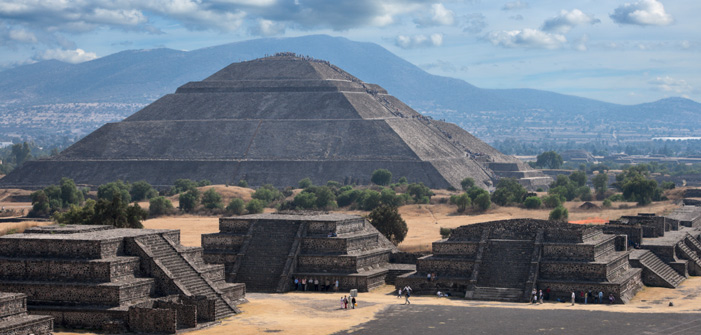Mexico City - A fine amalgamation of past and present
By Carlton Leisure -
26/08/2014

Mexico City, the capital of Mexico, is the third largest urban hub in the world. The city with a culture of 1,000 years, historic buildings and several elements of modernity give a feel of European capital, and tourists having visited the city can vouch for that. On your arrival, you will see ancient ruins, golden stones, prehistoric carvings, and several symbols of Aztec empire. The city with several Spanish colonial churches, Cathedrals is fast embracing modernity with gleaming glass and steel towers and climate controlled shopping malls. Not a surprise, thousands of travellers from around the world fly to Mexico City which is a fine combination of tradition and modernity. Here we list some of the prime draw cards of the Mexican capital.
Templo Mayor
Museo Templo Mayor and the Templo Mayor archaeological site are major attractions in the city that were discovered in 1976 and since restored. The pyramid is supposed to be the major spiritual temple of the Aztecs. So these sites are highly frequented by people with interest in pre-Columbian Mayan history. Enjoying an interesting location in vicinity to Zocalo also works to its advantage.
Plalacio Nacional
Plalacio Nacional showcases Diego Rivera murals (painted between 1929 and 1951). These murals give an insight into the Mexican civilization from the arrival of Quetzalcóatl (the Aztec plumed serpent god) to the post-revolutionary period. There are several murals that showcase the Mexican life before Spanish conquest. The building also houses the offices of the president of Mexico and the Federal Treasury.
Zocalo
One of the main squares in the city Zocalo officially known as Plaza de la Constitución, is one of the most recognisable landmarks in Mexican Capital. The square with a huge flag at its center has been an important meeting place for masses since the days of the Aztecs. The place is also the venue for annual, widely attended religious events during Holy Week and for Corpus Christi. The square is also surrounded by several historic buildings that include the city's national cathedral, the National Palace, and federal buildings.
National Museum of Anthropology
Situated amidst the famous Chapultepec Forest, the Museo Nacional de Antropología (National Museum of Anthropology) offers an insight into pre-Columbian epochs through its various interesting artefacts that include the famous Piedra del Sol, the famous Aztec Calendar Stone, and the famed 16th-century statue of Xochipilli.
Teotihuacán
One of the major UNESCO World Heritage sites in the Mexico City, Teotihuacán (teh-oh-tee-wa-can) is home to some of the largest pre-Columbian pyramids in Mexico. The site also contains several other buildings that include the Palace of the Plumed Butterfly, Pyramid of the Sun and several other museums.